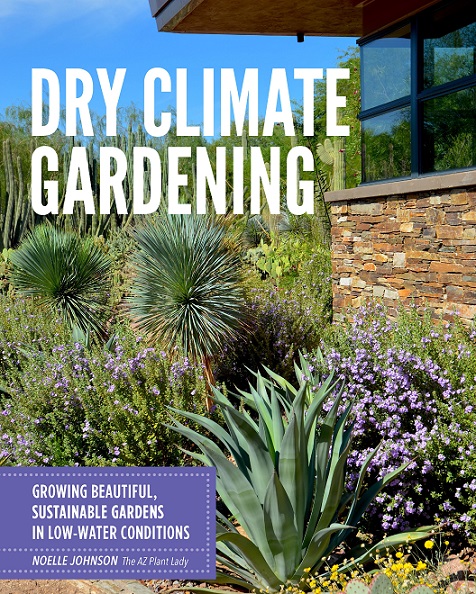Sustainable Gardening in Dry Climates

Sustainable Gardening in Dry Climates: Thriving Amidst the Arid
Gardening in Dry Climates: A New Perspective
Living in a dry climate doesn't mean you have to give up your dream of a lush garden. It's all about sustainability and making smart choices. Let's dive into the world of sustainable gardening practices for dry climates and turn your desert landscape into a thriving oasis.
Understanding Your Climate
First things first, get to know your climate. Dry climates are typically defined by low humidity and minimal rainfall. This means water is scarce, and you've got to make every drop count. But don't worry, we'll get to that.
Embracing Drought-Tolerant Plants
Plants are the backbone of any garden, and drought-tolerant plants are your new best friends. These tough cookies thrive in dry conditions and require minimal water. Think succulents, cacti, and native grasses. They're not only hardy but also stunningly beautiful.
The Art of Xeriscaping
You might be thinking, how do I design my garden with these plants? Enter xeriscaping. This landscaping method is all about creating a beautiful garden that needs little to no water beyond what nature provides. It's not just about plants; it's about designing your space thoughtfully.
Designing Your Desert Landscape
Desert landscaping isn't just about cacti and sand. It's about creating a balance between plants, hardscapes (like paths and patios), and open spaces. Think of it like painting a picture, but with plants and stones.
Water-Efficient Gardening: Every Drop Counts
Water is liquid gold in dry climates, so let's make every drop count. Water-efficient gardening is about more than just plant choice; it's about how you water. Drip irrigation systems are a great way to ensure water goes straight to your plants' roots.
Sustainable Irrigation: The Smart Way to Water
Speaking of irrigation, let's talk about sustainable irrigation. This means watering deeply but infrequently to encourage strong root growth. It also means using smart controllers that adjust watering based on weather conditions.
Mulch: Your Garden's Best Friend
Mulch is like a warm blanket for your plants. It helps retain moisture, suppresses weeds, and regulates soil temperature. Organic mulches, like wood chips or straw, also improve soil health as they break down.
Soil Health: The Foundation of Your Garden
Healthy soil is the foundation of any successful garden. In dry climates, improving your soil's water retention is key. Adding compost can help increase your soil's organic matter, improving its ability to hold onto water.
Harvesting Rainwater: A Free Resource
Why not make the most of the rain that does fall? Rain barrels and other rainwater harvesting systems collect water from your roof, providing a free source of water for your garden.
Greywater Recycling: Reduce, Reuse, Recycle
Greywater recycling is another way to make the most of scarce water resources. Greywater is gently used water from your home (like from your shower or washing machine) that can be used to water your garden.
The Benefits of Shade
Shade isn't just for keeping you cool; it helps your plants too. Incorporating shade structures, like pergolas or arbors, can help reduce water loss from evaporation, keeping your garden happier and healthier.
Creating a Wildlife Habitat
A sustainable garden isn't just about plants; it's about creating a habitat for local wildlife. Birds, bees, and butterflies all play crucial roles in a healthy ecosystem. Choose plants that provide food and shelter for these critters.
Maintenance: Keeping Your Garden Thriving
Even the most water-efficient gardening strategies require some maintenance. Regularly check your irrigation system for leaks, keep your plants pruned, and replenish your mulch as needed.
Conclusion
Creating a sustainable garden in a dry climate isn't just about surviving; it's about thriving. By embracing drought-tolerant plants, practicing xeriscaping, and implementing sustainable irrigation methods, you can turn your desert landscape into a lush oasis. For more tips on water-efficient landscaping, check out the EPA's WaterSense program. Happy gardening!
FAQs
Q: What are some examples of drought-tolerant plants?
A: Some popular drought-tolerant plants include succulents (like aloe and agave), cacti, lavender, rosemary, and many native grasses and wildflowers.
Q: How often should I water my drought-tolerant plants?
A: It depends on the specific plant and your climate, but generally, a deep watering every 1-2 weeks is sufficient once plants are established.
Q: Can I still have a lawn in a dry climate?
A: Traditional lawns are very water-intensive, but there are alternatives. Consider planting a native grass mix that requires less water.
Q: What is hydrozoning?
A: Hydrozoning is the practice of grouping plants based on their water needs. This ensures that each plant gets the right amount of water, reducing waste.
Q: How can I tell if my plants need water?
A: Look for signs of wilting, curling leaves, or a change in leaf color. Also, stick your finger about 2 inches into the soil. If it feels dry, it's time to water.
0 Response to " Sustainable Gardening in Dry Climates"
Post a Comment